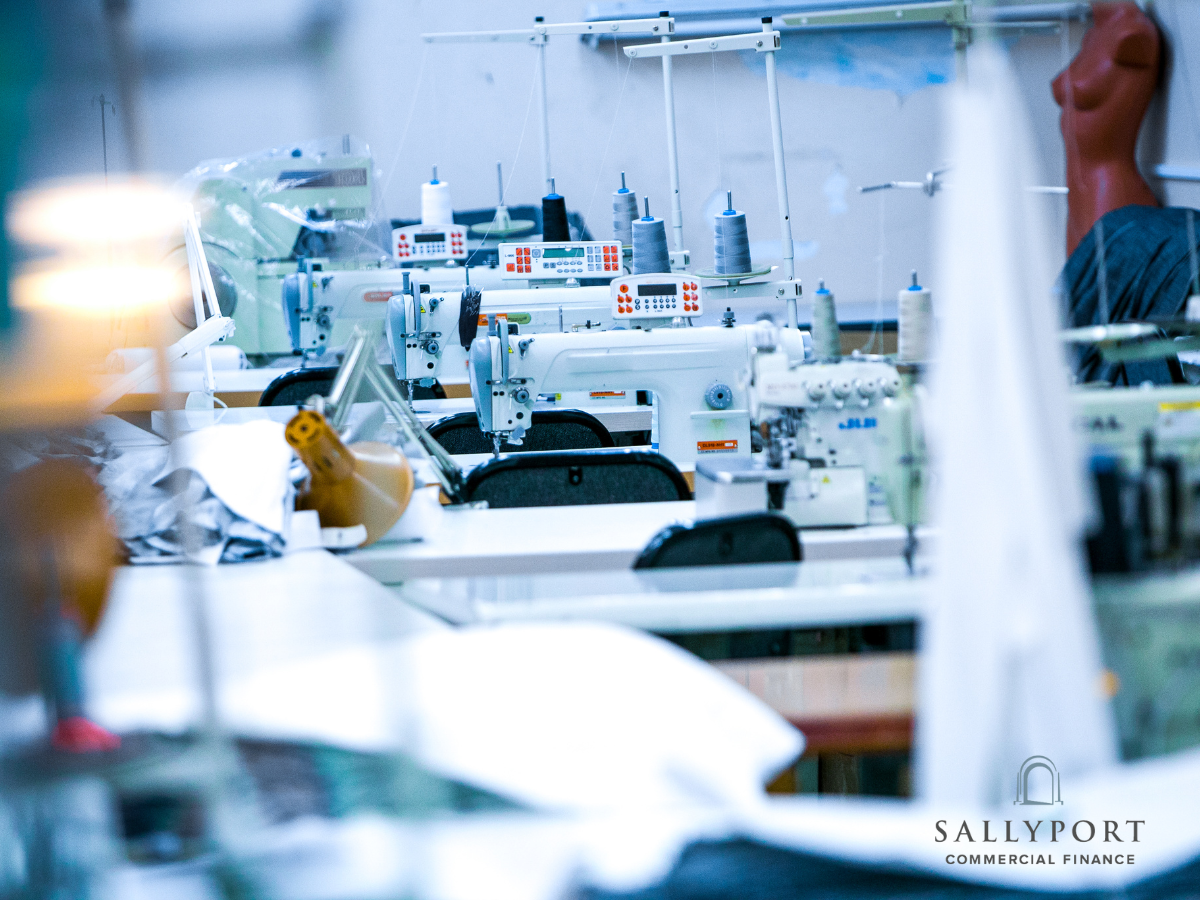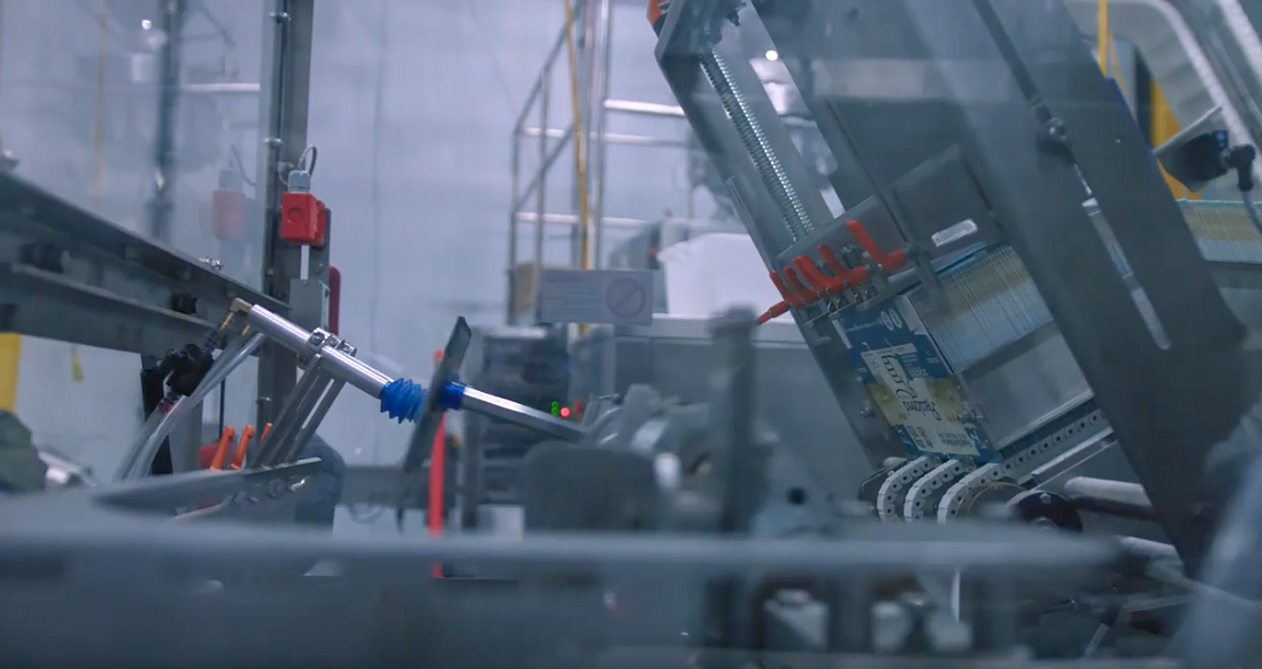Articles & Videos
Equipment Financing for Startups- The Lowdown

Equipment financing refers to finance that is used to loan or lease a tangible business asset other than real estate. Examples of tangible assets could be technological equipment, vehicles, office furniture or heavy manufacturing machinery.
Finding equipment financing for startups can be complex. With less time in business and less trading and credit history to rely on, banks can be reluctant lenders to newer businesses. More often than not, for many industries, the initial outlay on equipment will be significant and they simply don’t yet have the working capital to invest – any liquidity they do have must typically be preserved for ongoing expenses.
Equipment finance can provide a solution to the challenges faced by startups, offering accessible funding options tailored to the needs of a young and growing company.
Why is Equipment Financing Crucial for Startups?
Equipment financing is especially pertinent for startups for several reasons…
Limited Initial Capital
Startups often have limited capital and may not have enough funds to make significant upfront investments in necessary equipment. Financing allows them to acquire essential assets without depleting their cash reserves, helping them manage their finances more effectively. Closely related to this is cash flow management. Startups need to carefully manage their cash flow to cover various operational expenses such as salaries, rent, marketing and the purchase of inventory. By financing equipment, startups can spread the cost over time, which helps them maintain adequate cash flow to support other critical business activities.
Access to High-Quality Equipment
To compete effectively and deliver high-quality products or services, startups may need access to advanced or specialized equipment. Equipment financing enables startups to obtain state-of-the-art technology and machinery that might otherwise be unaffordable, giving them a competitive edge.
Building Credit History
For startups, establishing a credit history is important for future borrowing needs. Successfully managing equipment financing payments helps build a positive credit profile, making it easier for the startup to secure additional financing or loans in the future.
Tax Benefits
Equipment financing can offer tax advantages, such as deductions for depreciation and interest payments. These tax benefits can reduce the overall cost of acquiring equipment and improve the startup’s financial position.
Flexibility and Scalability
Equipment financing options often come with flexible terms and conditions that can be tailored to the specific needs of a startup. This flexibility allows startups to scale their operations and acquire additional equipment as they grow, without being constrained by large upfront costs. This is a primary advantage of Accounts Receivable Finance, a facility that can grow as your business grows.
Risk Mitigation
By financing equipment, startups can mitigate the risk associated with owning and maintaining expensive assets. Many financing agreements include maintenance and repair services, which can reduce the risk of unexpected breakdowns and associated costs.
Focus on Core Business Activities
Financing equipment allows startups to focus their resources and energy on core business activities such as product development, marketing, and customer acquisition, rather than worrying about large capital expenditures.
Rapid Deployment
In fast-paced industries, startups need to quickly deploy equipment to capitalize on market opportunities. Equipment financing enables rapid acquisition and deployment of necessary assets, allowing businesses to respond swiftly to market demands and growth opportunities.
Understanding Options: Equipment FInancing for Startups
For startups, securing equipment financing is crucial for acquiring the necessary tools and machinery without draining cash reserves. There are many different sources of equipment finance for a startup business including loans, leasing, government programs and other solutions like equipment rental programs. Here are some of the different kinds of equipment finance options available:
Equipment Loans
- Term Loans: Traditional loans with fixed interest rates and monthly payments over a set term.
- Balloon Loans: Loans with lower monthly payments and a large final payment (balloon payment) at the end of the term.
Equipment Leasing
- Operating Lease: Allows use of equipment without ownership, often with lower monthly payments. At the end of the lease term, the equipment is returned.
- Capital Lease (Finance Lease): Similar to a loan; lessee can buy the equipment at the end of the lease term for a nominal price.
- Fair Market Value Lease: Payments based on the fair market value of the equipment. At the end of the lease, the lessee can purchase the equipment at its fair market value.
Equipment Sale-Leaseback
- Sale-Leaseback Arrangement: A startup sells its existing equipment to a lender and leases it back. This frees up capital while retaining the use of the equipment.
Vendor Financing
- Vendor Financing Programs: Equipment manufacturers or dealers provide financing to help purchase their products, often at competitive rates.
SBA Loans
- SBA 7(a) Loan Program: Offers loans for equipment purchase with longer terms and lower down payments.
- SBA 504 Loan Program: Provides long-term, fixed-rate financing for major assets, including equipment.
Equipment Financing Agreements (EFA)
- EFAs: These are similar to loans but are structured more like a lease, often with flexible terms and less stringent credit requirements.
Hire Purchase Agreements
- Hire Purchase: Allows the startup to use the equipment while paying in installments. Ownership is transferred after the final payment.
Peer-to-Peer (P2P) Lending
- P2P Lending Platforms: Startups can borrow funds from individual investors through online platforms to finance equipment purchases.
Crowdfunding
Equity Crowdfunding: Raise funds from a large number of people, typically via online platforms, in exchange for equity in the company.
- Reward-Based Crowdfunding: Raise funds in exchange for rewards, which could be the equipment or related products once financed and produced.
Business Credit Cards
- Credit Cards: Use business credit cards to purchase smaller equipment or technology. This is typically suited for less expensive items due to higher interest rates.
Angel Investors and Venture Capital
- Angel Investors: Individual investors who provide capital for equipment in exchange for equity or convertible debt.
- Venture Capital: Firms that invest in startups with high growth potential, often used to fund significant equipment purchases.
Bank Loans
- Traditional Bank Loans: Banks offer loans specifically for equipment purchases, typically requiring collateral and a strong credit history.
Government Grants and Subsidies
- Grants and Subsidies: Various government programs offer grants or subsidies to startups for specific equipment, particularly in sectors like renewable energy, emerging technology and manufacturing.
Alternative Finance Solutions
- Alternative finance companies often have a catalog of finance solutions that they can pick and choose from so that they can tailor a package to the startup’s individual needs. Invoice factoring, PO finance and cash flow loans are just some of the services Sallyport provides which can release liquidity for a business to be able to invest in the equipment they need to grow. Given that we’re not regulated in the same way, our lending requirements are also not nearly as stringent as a banks.
Each financing option has its advantages and potential drawbacks, so startups need to consider their specific needs, financial situation and long-term goals when choosing the right type of equipment financing.
Equipment Financing Vs Equipment Leasing Pros and Cons
Often, the term Equipment Financing is used to cover the acquiring of equipment through either traditional finance (also known as an Equipment Loan) or leasing. Although the term Equipment FInance is a generic way to describe acquiring equipment, the way that Equipment Finance and Equipment Leasing works has some very key differences that businesses will want to factor into their financing decisions;
Ownership
FInance: You have ownership of the equipment financed from the start of the agreement.
Lease: The lease company retains ownership of the equipment until such a point that you pay for the equipment in full at the end of the lease term or you relinquish it back.
Maintenance
Finance: With a traditional finance method, you will be responsible for the upkeep of your equipment including any maintenance and repairs required.
Lease: The lease company will be responsible for any repairs or maintenance that the equipment needs for the duration of your agreement.
End of Agreement
Finance: At the end of your finance term, the equipment will be yours to do with as you wish. You have a fully-owned asset and can use the freed-up funds elsewhere or invest in new equipment.
Lease: At the end of your lease term, you will typically need to return the equipment to the lease company, unless you purchase that equipment from them and ownership is transferred. This will often need a true-up payment to cover the difference between your payments to date and the residual value of the equipment at that point.
There is no one-size-fits-all as to whether finance or leasing is most appropriate. Business owners will need to consider their unique goals and long-term strategy and consult with their finance and legal professionals in determining the best way forward in funding their growth initiatives.
Why Might Startups Have a Hard TIme Securing Equipment Finance?
Startups face a unique set of financial challenges that can hinder their growth and sustainability. These challenges often stem from limited resources, lack of a proven track record and the inherently risky nature of new ventures. It’s for these reasons and the fact that they typically have very constrained financial resources in the early days that can make it challenging to cover the ad-hoc capital costs of scaling up their business.
As we’ve alluded to, the challenge with many of the finance solutions we mentioned, is that the eligibility requirements are just too stringent for newer businesses. SBA loans typically require a FICO Small Business Scoring Service (SBSS) credit score of 640 but it can be as much as 680-690 to access the best available options and traditional bank small business loans will be a similar story. Many startups will score a lower SBSS score purely because they haven’t had the chance to build up a credit history.
Interest rates and speed of funding can be impacted based on a lender’s assessment of the startup’s financial health and risk profile and in this way startups can have a harder time securing some of the more traditional finance solutions. Lenders will typically want to see historic and projected financial documentation, however, alternative finance providers are more interested in the potential for growth as opposed to past performance.
When seeking equipment finance for your startup, there are some key documents you may be asked to provide to your lender. While this type of financing offers numerous benefits, having comprehensive and accurate documentation can help in securing approval. Here’s what you might need:
- Financial Records: You’ll need to present financial documents that demonstrate your ability to repay the loan. These records provide a snapshot of your business’s financial health. Even if your finances aren’t strong, many lenders are open to negotiating alternative terms to accommodate your situation.
- Business Plan: Since startups often lack extensive financial history, a detailed business plan becomes crucial. This document should outline your business’s growth potential and profitability. A well-structured business plan can reassure lenders of your commitment and capability to manage the financed equipment responsibly.
- Credit Score: Depending on the lender, your credit score may be requested. While this isn’t always a strict requirement for some lenders, it can influence the terms of your financing. More flexible institutions might waive the credit score check if you meet other qualifications or agree to specific conditions.
By preparing these documents, you’ll enhance your chances of obtaining the necessary equipment finance to propel your startup forward.
Equipment Financing for Startups Doesn’t Have to be a Hassle
Equipment financing is not just a necessity for startups—it’s a strategic decision that can set the stage for a sustainable business and long-term success. Startups might face additional hurdles like stringent eligibility requirements and higher interest rates due to limited credit history and financial records but loans can still be within reach for new businesses. Effective cash management, proper financial documents and a solid business plan can significantly improve your chances of securing the funding you need to acquire essential equipment and drive business growth.
Sallyport has a wealth of experience in looking past a lack of track record and towards future potential when determining eligibility for equipment financing. Our team is also there to support your business like your own employees; we can assist where you may have limited resources, looking after your Accounts Receivable management and providing insight into financial compliance and reporting for example. With the right approach and our support, you can secure the necessary funding to acquire essential equipment, support your business operations and drive your startup forward. Reach out today to hear how we’ve enabled other startup businesses to position themselves for success with tailored financial solutions.
Search
News
$1M Funding Fuels Agri-Business Growth Across Borders
Sallyport is pleased to announce a new partnership with a Canadian agriculture business, providing a $1,000,000 Accounts Receivable facility to…
Read MoreFueling EdTech Growth with $5.5M in Tailored Financing
Sallyport is excited to support a forward-thinking education technology company with a $5.5M combined Asset-Based Lending facility, including Accounts Receivable…
Read MoreArticles
UK Firms Consider Move Across the Pond
Over 6-months following the UK’s official exit from Europe and the implications for UK-based exporting businesses remain murky. Many larger…
Read MoreHow to Extend Credit to Customers the Right Way
In the current climate it’s highly likely you’ve already been asked to extend credit terms to your customers. Small businesses…
Read MoreVideos
Popkoffs Client Testimonial
Popkoffs Client Testimonial
View NowAmerican Business Women’s Day
Sallyport Commercial Finance Celebrates American Business Women’s Day
View Now



